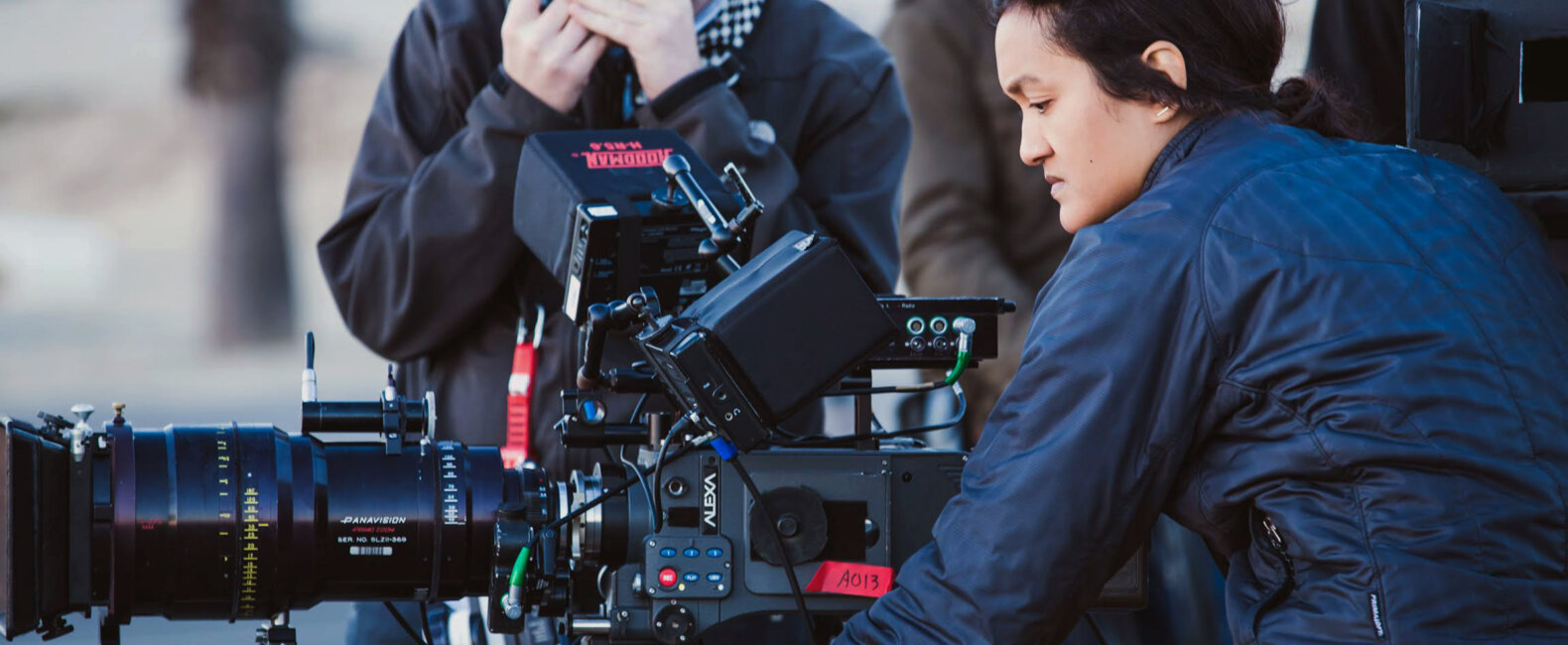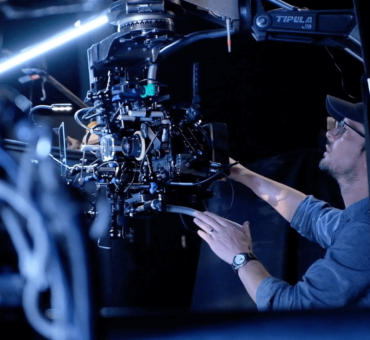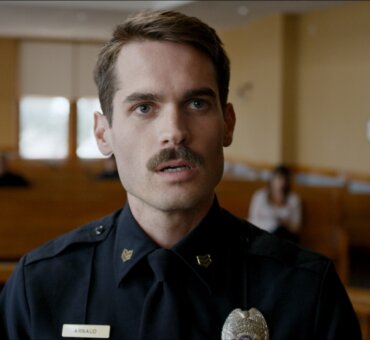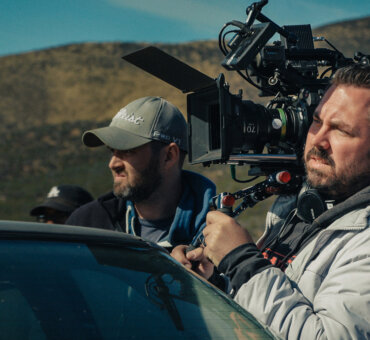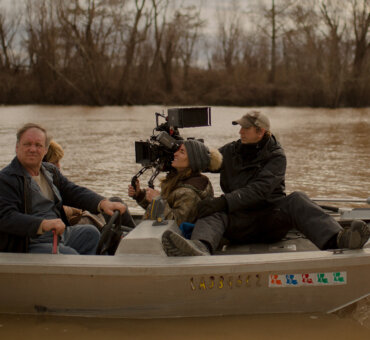“Not to sound cocky or anything, but I actually think it’s kind of easy to make something look good,” Autumn Durald told us. She’s the acclaimed cinematographer behind feature films like Palo Alto and One and Two, as well as music videos for bands like Arcade Fire and London Grammar. A cinematographer, in other words, who has plenty of reasons to feel cocky, if she wants to. “Nowadays there’s this attitude of ‘I can make something look great; therefore, I’m a great DP.’ But that’s not what being a great DP is about.”
We asked Autumn to break down a few of her favorite frames and dive into what being a great DP is really all about. Here’s Autumn.
ONE AND TWO
This is a small independent feature I shot in North Carolina in 2014. Not a lot of people got to see this film, which is too bad because it’s a beautiful story written and directed by Andrew Droz Palermo, who was previously a DP. This was his first time directing.
As a small indie film, it was severely underfunded; and yet there are a ton of visual effects. The young actress is Kiernan Shipka, and the actor is Timothée Chalamet. (He also appeared in Christopher Nolan’s Interstellar.) They play a sister and brother with special powers, like superheroes. So doing that kind of film on a small budget and with a lot of in-camera effects was crazy. But we wanted to sell this mystical world, and I’m proud of what we were able to pull off.
In this scene the family is having dinner in their secluded farmhouse. The mother is very, very sick. She has seizures. And the kids are scared of their father. So the camera is sitting in the position of the father at the end of the table, which is a position of power.
I love the production design in this. It is a historical house, and it was the first time a narrative feature was shot there. We had to be very careful in it because it is extremely well preserved and very tight quarters. It was like shooting an anamorphic film in a 12-by-12 box. We were very limited with where we could place the camera.
But, man, I really love the lighting! We shot day for night on this. I love the color contrast and the points of light from the lanterns and candles. I had a covered wagon above the table, which we made for the shoot. We put Edison bulb sockets on a wood plank with three or four 60-watt bulbs on a dimmer. Then it’s wrapped in chicken wire and covered in muslin to diffuse the light. That’s what is hanging above them. There is soft natural daylight coming in through the window, but I’ve got a neutral density gel on it. I think it’s an ND9 or 1.2. And then, of course, the kerosene lanterns in the background and the single candle.
The film was shot on the ARRI ALEXA with Panavision high-speed anamorphic lenses. I love the high speeds. There was a lot of night work in this film, and those allow you to shoot wide open. They are very, very soft and fall apart wide open, but the image is beautiful. What I particularly like about them is they have a lot of aberrations and character. The lens I used a lot was a high-speed 50mm that was adjusted for me during a music video I shot for London Grammar. My lens specialist at Panavision Hollywood, Guy McVicker came up with kind of a recipe for it.
The unfortunate thing about this movie is that it came up through the Sundance Institute Lab but didn’t get into the Sundance Film Festival. That was a heartbreaker for the director and the producer. Even though it premiered at Berlin and at South by Southwest — and it looked great — most people will probably see it on Netflix or iTunes. When I watched it that way, I was like, “Oof.” It wasn’t horrible, but it didn’t look anything like the DI projection at Berlin. It’s a bit of a bummer because I don’t light a film or shoot a film thinking that’s the way people are going to view it. Whether I’m shooting 35mm or digital, I always light and shoot things for a theatrical release.
PALO ALTO
So here’s the thing: I ended up becoming the DP on this film by shooting a test, while filling in for a friend. Gia Coppola, the director, did test footage for James Franco (the film is based on his novel) because the book is a series of vignettes. After we shot the test, she asked me to be the DP on the film.
This will always be a very, very special film for me. Obviously, it did wonders for my career, as well as a lot of the other people who were involved. But it was the kind of film you work on out of love. I really got to know the people involved, and it was like a family. This is the film I will always look to as an example of why I got into doing movies in the first place.
And it’s a movie that keeps attracting new audiences. I don’t think Gia knew that would happen, but it makes sense because it captures what high school life is really like. We still get emails from kids who say, “Thank you for making that film,” and “Thank you for showing teenage life in that way,” and “It helped me get through high school.” I feel like that’s such a testament to Gia.
This frame is from the last scene when Teddy (played by Jack Kilmer) is checking his phone. We never show what’s on the phone because the next shot is of him walking away in a really long zoom. We shot the scene off Fletcher Drive in Los Angeles. There’s a river down there, and it’s like he’s walking into an abyss. It makes complete sense for the film, right? I mean, in high school you have no clue where your life will lead. And the whole movie is about these kids who are out at night, doing crazy shit. They’re by themselves in the middle of nowhere. So I think this shot captures that emotional feeling. The camera movement, the lighting, the location, everything about it fell into place.
You never really know if a location is going to work out, but we had a good feeling about this one. We’d been scouting a bunch of places we didn’t think would work, when Gia looked down and said, “How about there?” I knew it was exactly right for what we wanted.
That’s a huge part of being a DP. My job is to go with the director to scout locations and try to imagine what it’s going to look like on-screen. If we scout 10 different houses, it’s my job to know which one is going to be the best place to give the director what he or she wants. A lot of times we’ll scout it during the day but it’s a night shoot. So I need to envision how the house will look at night with my equipment, with the production design, and with the actors in it. And I need to be sure that, yes, this is where we need to shoot.
Palo Alto was my third feature, and it was my biggest one at that point. I shot it on a RED Epic. Back then the Epic was new and really popular. It was also the lightest full frame sensor camera at the time. But we mostly chose it because it was affordable and met our needs. I shot with Panavision’s super speed and ultra speed lenses. They are spherical, from the 1970s; it is older glass, softer.
To light the scene, we had just one 6K HMI par up in a stand. I love seeing that light directly in shot. That’s one of my favorite things — having my light actually appear in the shot. Obviously, you can’t tell that it’s my light, but that’s what’s providing Jack’s backlight. All the other lights are natural practical lights. And I think there’s a bead board because there’s some glow on his hands.
During the shot I was being pulled back on a dolly, so it kind of looks like a Steadicam shot. And then, like I mentioned earlier, I followed with a really long zoom shot — like an 11 to 1. I was standing at the top of a bridge, and Jack was below. And I did a really, really slow, long zoom on him as the credits kept rolling. It was one of those shots that I’d planned out ahead of time, and I’m so glad it’s as impactful as we thought it would be.
THE GOOD TIME GIRLS
This frame is from The Good Time Girls, which is a short film directed by Courtney Hoffman. Courtney did the costume design for Palo Alto, and then her career skyrocketed after that. She’s worked on films like The Hateful Eight, Captain Fantastic, and Edgar Wright’s new film, Baby Driver. She decided to start directing, and this is her first project. We’d kept in touch since Palo Alto, so she asked me to shoot The Good Time Girls. It was part of the American Film Institute’s Conservatory Directing Workshop for Women, and Quentin Tarantino came on board as the executive producer. Courtney got people who’d worked on films like Django Unchained and Inglorious Basterds to help on the short, so we had amazing resources and people. All of the department heads were women.
We shot the film on 35mm Anamorphic Kodak stock 5207. But what’s really cool about it is that for all the interior shots, I flashed it with a Panaflasher using red light.
There are a few ways you can flash film. An old-school way is to flash it prior to exposing it. I flashed it while exposing it. Flashing lets you control the contrast a bit so you can bring out details in the darker areas, while giving you more of a wash or softer light effect. When you flash with red light, it infuses the shadows with a warm red wash without impacting the highlights too much. The way I did this was with a Panavision Panaflasher. It was a prototype that had a new LED and digital interface. You affix it in front of the lens on the matte box, and it flashes light into the lens. It was very cool.
Since Courtney’s short is an old-school Western, and since I don’t often get to shoot on 35mm, I really wanted to go for it. I liked Vilmos Zsigmond’s work on McCabe and Mrs. Miller (1971), and he flashed his film in that movie. So since we had support from Panavision and Kodak, I decided why not give it a try?
This particular shot is from a scene when a group of women bandits are going after a gang of cowboys, and they pretend to be whores in a whorehouse. This is the moment when one of the youngest bandits brings one of the bad guys into her bedroom, and it’s right before she shuts the door. I like it because even though he’s getting ready to have sex with her, she has the power.
We shot the scene in a farmhouse at Big Sky Movie Ranch, which is where they shot parts of Django Unchained. And I love the wallpaper and design of the room. I have two 12×12 unbleached muslins reflecting the sun bouncing light in and two 4×4 mirrors for texture and hot spots. There is also a rifa light on the floor in front of the door for skip bounce. All of my lighting is from the outside in this image except for the skip bounce. We also pumped some dust into the room so you feel the light. As well as flashing, I pulled all the stock 1 stop. It’s got a great look. And not to sound cocky or anything, but I actually think it’s kind of easy to make something look good.
Nowadays there’s this attitude of “I can make something look great; therefore, I’m a great DP.” But that’s not what being a great DP is about. It’s how the shot makes you feel that’s important. It’s got to feel right for the moment and for the story. I think about what comes before the shot and after the shot. How it all fits together.
What’s so great about this frame is that it not only captures that specific moment in the story, but the actors and the production design and lighting and camera teams all came together. That’s what makes it magic, you know? That’s why I love my job. Working in film is super hard and exhausting. A lot of people have to leave their families for 14 hours a day and for many months at a time. But what you get out of it are perfect moments like this.
